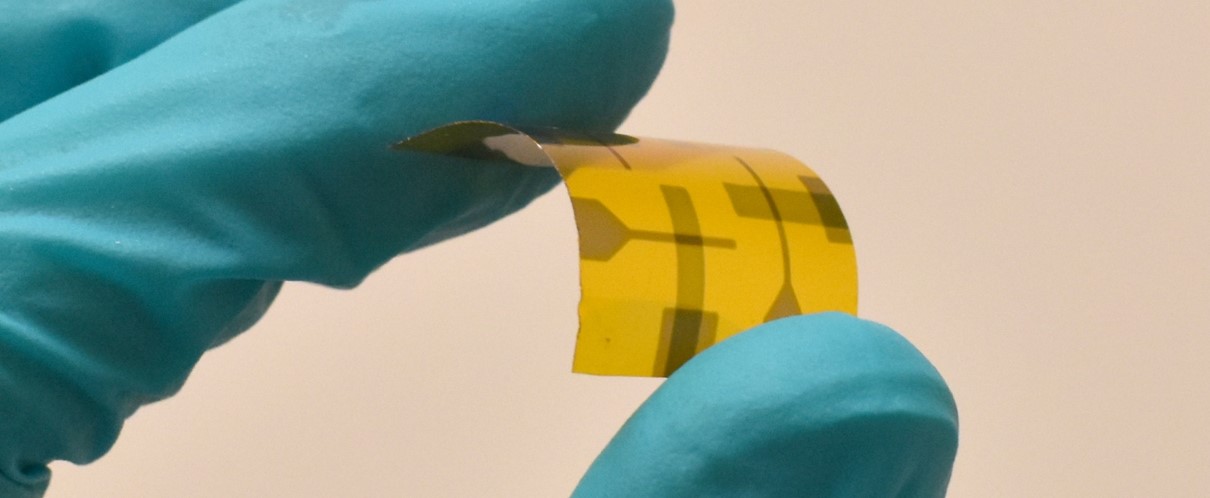
Researchers at NC State were able to deposit an ultra-thin oxide ferroelectric film onto a flexible polymer substrate for the first time. The team uses the flexible films to make non-volatile memory devices that are wearable and resilient. Ferroelectric materials can store charge, which is an ideal property for non-volatile memory devices. However, ferroelectric materials tend to be brittle and are typically made at high temperatures, which would destroy most polymers. Researchers were able to grow an extremely thin film of hafnia (20-50 nm) onto plastic substrates at low temperatures. The resulting prototype remained stable and flexible during testing and can be used in numerous applications from defense to space.
A press release can be found here.
“Flexible Inorganic Ferroelectric Thin Films for Non-Volatile Memory Devices”
Authors: Hyeonggeun Yu, Ching-Chang Chung, Nate Shewmon, Szuheng Ho, Joshua H. Carpenter, Ryan Larrabee, Tianlei Sun, Jacob L. Jones, Harald Ade, Brendan T. O’Connor, and Franky So, North Carolina State University
Published: April 12, 2017 in Advanced Functional Materials
Abstract: Next-generation wearable electronics calls for flexible non-volatile devices for ubiquitous data storage. Thus far, only organic ferroelectric materials have shown intrinsic flexibility and processibility on plastic substrates. Here, we discovered that by controlling the heating rate, ferroelectric hafnia films can be grown on plastic substrates. The resulting highly flexible capacitor with a film thickness of 30 nm yielded a remnant polarization of 10 μC cm-2. Bending test shows that the film ferroelectricity can be retained under a bending radius below 8 mm with bending cycle up to 1,000 times. The excellent flexibility is due to the extremely thin hafnia film thickness. Using the ferroelectric film as a gate insulator, a low voltage non-volatile vertical organic transistor was demonstrated on a plastic substrate with an extrapolated date retention time up to 10 years.

